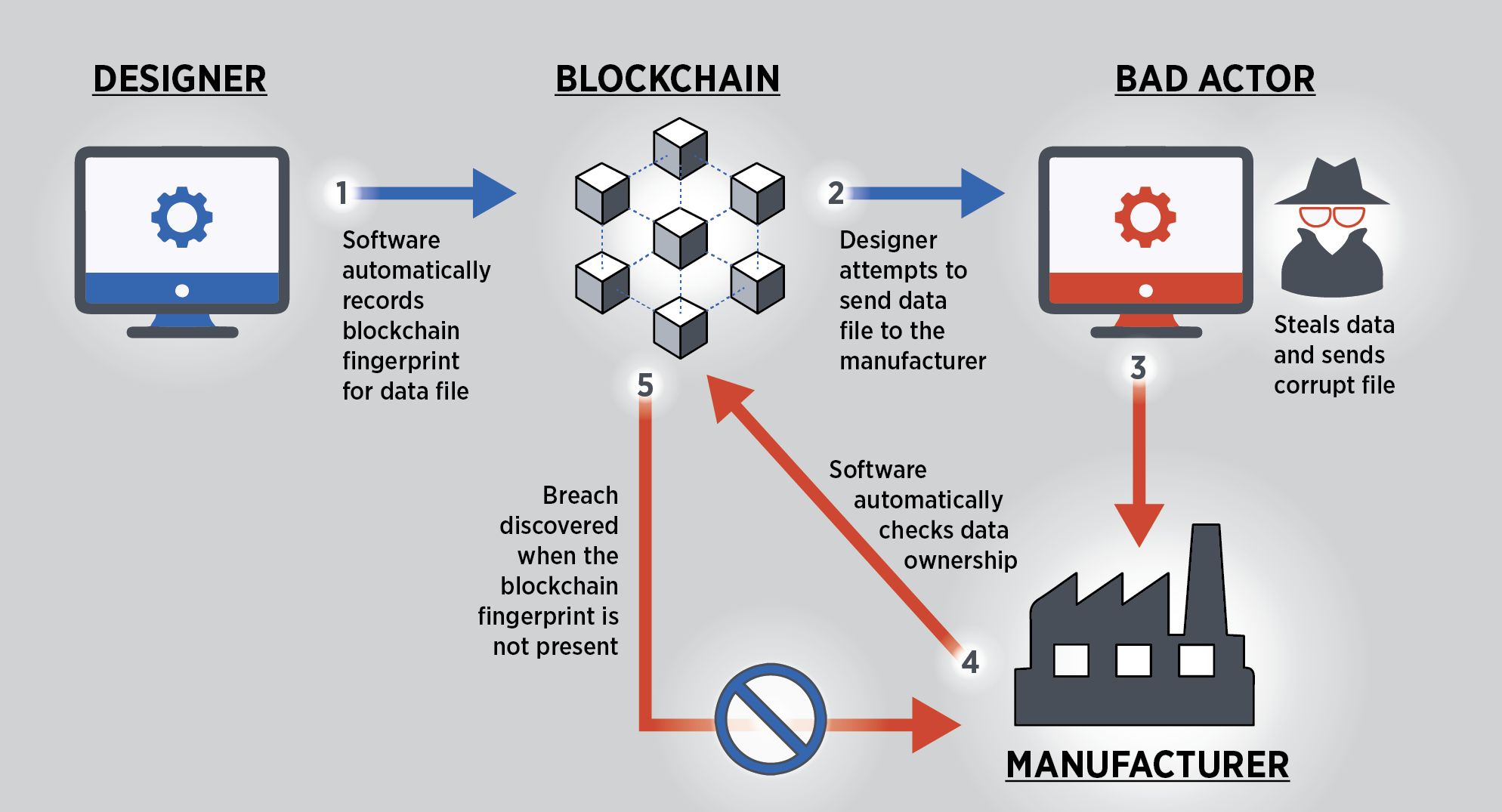Introduction
Welcome to the exciting world of blockchain business! In today’s digital age, the blockchain technology is revolutionizing various industries by providing a secure, transparent, and decentralized system for recording and verifying transactions. From cryptocurrencies to supply chain management, blockchain has the potential to reshape the way businesses operate.
But why is blockchain receiving so much attention? What exactly is blockchain and how does it work? In this article, we will explore the fundamentals of blockchain technology, its features, and its applications in the business world. We will also discuss the benefits and challenges of implementing a blockchain-based business model.
Blockchain is essentially a distributed ledger that records transactions across multiple computers or nodes. It is designed to be transparent, tamper-proof, and resistant to censorship. Each transaction, or block, is cryptographically linked to the previous block, creating a chain of blocks that cannot be altered without consensus from the network participants.
One of the key features of blockchain technology is its decentralized nature. Instead of relying on a central authority, such as a bank or government, to validate transactions, blockchain allows for peer-to-peer verification. This means that no single entity has control over the entire network, making it more resistant to fraud and manipulation.
Furthermore, blockchain technology offers enhanced security through cryptographic algorithms. Each transaction is verified through complex mathematical computations, ensuring that the data stored on the blockchain cannot be easily tampered with. This level of security is particularly valuable in industries that handle sensitive information, such as financial services or healthcare.
Blockchain also enables transparency and immutability. Once a transaction is recorded on the blockchain, it becomes a permanent and verifiable part of the ledger. This transparency eliminates the need for intermediaries, reduces the risk of fraud, and allows for greater accountability.
In the following sections, we will delve deeper into how a blockchain business operates, the benefits it provides to organizations, and the potential applications in various industries. So, let’s embark on this journey to discover the fascinating world of blockchain business!
What is a Blockchain?
A blockchain is a decentralized and distributed digital ledger that records transactions across multiple computers or nodes. It is designed to be secure, transparent, and resistant to tampering. At its core, a blockchain is a chain of blocks, where each block contains a list of transactional data.
The concept of blockchain was first introduced in 2008 by an anonymous individual or group of individuals known as Satoshi Nakamoto. It served as the underlying technology for the creation of the first cryptocurrency – Bitcoin. However, the potential of blockchain extends far beyond cryptocurrencies and has gained traction in various industries.
At its most basic level, a blockchain is a series of interconnected blocks, each containing a unique identifier called a hash. The hash serves as a digital fingerprint for the block and is created based on the data it contains. This ensures the integrity and immutability of the information stored on the blockchain.
Each block in the chain also contains a reference to the previous block’s hash, creating a chronological sequence. This linking of blocks enables the formation of a transparent and verifiable ledger. Any attempt to alter the data in a block would result in a change in the hash, rendering it invalid.
Moreover, blockchain technology operates on a consensus algorithm, where network participants validate and agree on the validity of transactions. This consensus mechanism eliminates the need for a central authority and ensures the accuracy and trustworthiness of the recorded data.
The decentralized nature of blockchain means that there is no single point of failure. Instead, the network is maintained by a distributed network of computers, known as nodes. Each node has a copy of the entire blockchain, ensuring redundancy and resilience.
Blockchain technology offers several unique features that set it apart from traditional databases and centralized systems. These include:
- Security: The use of cryptography and distributed consensus mechanisms ensures the integrity and immutability of data stored on the blockchain.
- Transparency: The ledger is visible to all participants, promoting trust and accountability.
- Decentralization: There is no central authority controlling the blockchain, making it more resilient to attacks and censorship.
- Efficiency: Transactions on the blockchain can be processed quickly and securely, without the need for intermediaries.
- Cost savings: By eliminating intermediaries and automating processes, blockchain can reduce transactional costs.
Overall, blockchain technology has the potential to revolutionize various industries by transforming how transactions are recorded, verified, and executed. In the following sections, we will explore how blockchain is being utilized in the realm of business and the benefits it offers to organizations.
Features of Blockchain Technology
Blockchain technology has gained widespread attention across industries due to its unique set of features that offer numerous benefits. Let’s explore some of the key features that make blockchain a powerful and transformative technology:
- Decentralization: One of the most fundamental features of blockchain is its decentralized nature. Unlike traditional centralized systems where data is controlled by a single authority, a blockchain operates on a distributed network of computers or nodes. Each node has a copy of the entire blockchain, ensuring that no single entity has complete control over the network. This decentralization makes blockchain resistant to censorship, manipulation, and single points of failure.
- Transparency: Transparency is another crucial feature of blockchain technology. All transactions recorded on the blockchain are visible to all participants in the network. This transparency ensures accountability and trust, as anyone can independently verify the integrity of the data. With blockchain, there is no need to rely on a central authority for verification or audit, as the entire transaction history can be traced back through the publicly accessible blockchain.
- Immutability: Blockchain provides immutability, meaning that once a transaction is recorded on the blockchain, it cannot be altered or deleted. Each block in the chain contains a unique hash that is created based on the data it holds. Any attempt to modify the data would result in a change in the hash, rendering the block invalid. Immutability ensures the integrity of the data and provides a high level of security, making blockchain a suitable technology for applications that require tamper-proof records.
- Security: Security is a critical aspect of blockchain technology. Blockchain uses advanced cryptographic algorithms to secure the data stored on the blockchain. Each transaction is encrypted and linked to the previous transaction, creating a chain that is resistant to tampering. Furthermore, the decentralized nature of blockchain provides an added layer of security, as there is no single point of failure that can be targeted by malicious actors. This makes blockchain highly secure for applications that handle sensitive information, such as financial transactions or identity verification.
- Efficiency: Blockchain technology streamlines and automates many processes, resulting in increased efficiency. With blockchain, transactions can be executed and verified quickly, eliminating the need for intermediaries or manual processes. This efficiency leads to cost savings, as it reduces the time, effort, and resources required for complex transactions. Blockchain also enables real-time auditing and reconciliation, making it easier to track and manage transactions across multiple parties.
These features of blockchain technology make it a powerful tool for various industries. From finance and supply chain management to healthcare and voting systems, blockchain has the potential to revolutionize how business operations are conducted. In the following sections, we will explore how blockchain is being implemented in the realm of business and the benefits it offers to organizations.
Understanding Blockchain Business
Blockchain business refers to the incorporation and utilization of blockchain technology in various aspects of an organization’s operations. It involves leveraging the unique features of blockchain to streamline processes, enhance security, and drive innovation. Understanding blockchain business requires a grasp of how blockchain can be applied to different use cases and industries.
Traditional businesses often rely on centralized systems with intermediaries to facilitate transactions and secure data. In contrast, a blockchain business operates on a decentralized network, where data is stored on a distributed ledger that is accessible to all participants. This eliminates the need for intermediaries and provides greater transparency, security, and efficiency.
Blockchain business models can encompass a wide range of applications, including but not limited to:
- Supply chain management: Blockchain can revolutionize supply chain management by enabling transparent and traceable transactions. It allows for the secure tracking of products from their origin to the end consumer, ensuring authenticity, reducing counterfeiting, and improving efficiency.
- Finance and payments: Blockchain can revolutionize the financial sector by providing a secure and transparent platform for transactions. It has the potential to streamline cross-border payments, reduce transaction costs, improve fraud prevention, and enhance financial inclusion.
- Healthcare records: Blockchain can transform healthcare by securely storing and sharing patient records. It provides a tamper-proof and interoperable platform, enabling healthcare providers to access accurate patient data in real-time, leading to more informed decision-making and improved patient care.
- Smart contracts: Blockchain enables the creation and execution of self-executing contracts known as smart contracts. These contracts automate the verification, execution, and enforcement of terms and conditions, reducing the need for intermediaries and enhancing efficiency in various industries.
- Identity management: Blockchain can address the challenges of identity management by providing a secure and decentralized platform for storing and verifying identities. It enables individuals to have greater control over their personal data while enhancing privacy and security.
Implementing a blockchain business model involves assessing specific use cases, identifying areas where blockchain can add value, and developing the necessary infrastructure and partnerships. It requires a careful consideration of the potential benefits, challenges, and regulatory aspects associated with blockchain implementation.
Furthermore, a successful blockchain business requires collaboration and participation from various stakeholders. It involves building a network of participants, such as individuals, organizations, and even machines, who actively contribute to the blockchain ecosystem. The success of a blockchain business model often hinges on the collective consensus and cooperation of these participants.
In the next section, we will explore how a blockchain business operates and the benefits it brings to organizations that adopt this transformative technology.
How Does a Blockchain Business Work?
A blockchain business operates on the principles and functionalities of blockchain technology. It leverages the decentralized, transparent, and secure nature of blockchain to transform different aspects of business operations. Understanding how a blockchain business works requires knowledge of the underlying mechanisms and processes involved.
At its core, a blockchain business utilizes distributed ledger technology, where transactional data is securely recorded across multiple computers or nodes. Each participating node maintains a copy of the blockchain, ensuring redundancy and consensus among all participants.
When a transaction occurs in a blockchain business, it is processed and verified by network participants through a consensus mechanism. Depending on the type of blockchain, this consensus can be achieved through various algorithms, such as proof of work (PoW) or proof of stake (PoS).
Once a transaction is verified and validated, it is bundled with other transactions into a block. Each block contains a unique identifier called a hash, which is created based on the data it contains. Additionally, each block references the hash of the previous block, forming a chain of blocks. This linking ensures the security and integrity of the blockchain since any alteration in a block would change its hash, thereby breaking the chain and rendering it invalid.
Consensus is crucial in ensuring that all network participants agree on the validity of transactions and the order in which they are added to the blockchain. This decentralization and consensus mechanism make blockchain resistant to tampering, censorship, and single points of failure.
Furthermore, many blockchain platforms support the execution of smart contracts. Smart contracts are self-executing contracts with predefined rules and conditions encoded on the blockchain. They automatically enforce the terms of the agreement, without the need for intermediaries. Smart contracts enable automation, efficiency, and transparency in various business processes, such as supply chain management, insurance claims, and financial transactions.
In a blockchain business, transactions and data stored on the blockchain are visible to all participants. This transparency promotes trust and accountability, as anyone can independently verify the integrity of the data. It also reduces the need for intermediaries, potentially streamlining business processes and reducing costs.
To participate in a blockchain business, organizations and individuals typically use digital wallets or software applications that allow them to interact with the blockchain. These wallets provide users with a unique cryptographic key pair – a public key and a private key. The public key is used to identify the user on the blockchain, while the private key is kept secret and is used to sign transactions to verify authenticity.
Overall, a blockchain business operates by leveraging the decentralized, transparent, and secure nature of blockchain technology. It embraces automation, immutability, and smart contracts to enhance efficiency, security, and trust in various business processes. In the following sections, we will delve into the benefits of adopting a blockchain business model and explore real-world applications in different industries.
Benefits of Blockchain Business
Adopting a blockchain business model offers numerous benefits for organizations across different industries. The unique features and functionalities of blockchain technology provide advantages that can transform traditional business processes. Let’s explore some of the key benefits of implementing a blockchain business:
- Enhanced security: Blockchain technology provides a high level of security for transactions and data. The decentralized nature of blockchain, combined with cryptographic algorithms, makes it resistant to tampering, fraud, and unauthorized access. The immutability of data stored on the blockchain ensures that records cannot be altered or deleted, providing a reliable and transparent audit trail.
- Improved transparency: Transparency is a core characteristic of blockchain. All transactions recorded on the blockchain are visible to all participants, enabling greater transparency and trust in business operations. This transparency eliminates the need for intermediaries and promotes accountability at every step of the process.
- Reduced costs: Blockchain has the potential to reduce costs in various ways. By eliminating intermediaries and streamlining processes, organizations can save time and resources. Additionally, blockchain can reduce the overhead costs associated with traditional systems, such as reconciliation, auditing, and paperwork. The automated nature of blockchain transactions also eliminates the need for manual intervention and reduces the risk of human error.
- Increased efficiency: Blockchain technology enables faster and more efficient transactions. With its decentralized network and automated processes, blockchain eliminates the need for intermediaries, paperwork, and manual verification. Transactions can be executed and settled quickly, allowing organizations to operate at a higher speed and efficiency.
- Enhanced trust and accountability: Blockchain promotes trust by providing a transparent and immutable record of transactions. The distributed nature of blockchain ensures that no single entity has control over the entire network, reducing the risk of fraud or manipulation. This increased trust and accountability can be particularly valuable in industries that deal with sensitive data, such as healthcare and finance.
- Innovation and new business models: Adopting a blockchain business model opens up opportunities for innovation and the development of new business models. Blockchain technology enables the creation of decentralized applications (DApps), smart contracts, and tokenized assets, which can revolutionize industries and create new opportunities for value creation.
These benefits highlight the transformative potential of blockchain technology for businesses. From increased security and transparency to reduced costs and enhanced trust, blockchain offers a range of advantages that can drive operational efficiency and unlock new opportunities.
In the following section, we will explore the common applications of blockchain in different industries, showcasing how organizations are leveraging this technology to achieve their goals and overcome industry-specific challenges.
Common Applications of Blockchain in Business
Blockchain technology has the potential to revolutionize various industries by providing transparent, secure, and efficient solutions. Let’s explore some common applications of blockchain in business:
- Supply chain management: Blockchain can transform supply chain management by providing transparency and traceability. It allows companies to track and verify the movement of goods through each step of the supply chain, ensuring authenticity, reducing counterfeiting, and improving efficiency. Blockchain enables secure and immutable records of transactions, certifications, and product information, enhancing trust among suppliers, manufacturers, and consumers.
- Financial services: Blockchain is disrupting the financial industry by enabling secure and transparent transactions without the need for intermediaries. It can facilitate faster and cheaper cross-border payments, streamline remittances, and provide financial inclusion to the unbanked. Blockchain can also revolutionize the lending and insurance sectors by automating smart contracts, reducing paperwork, and increasing efficiency in claims processing and underwriting processes.
- Healthcare: Blockchain technology can revolutionize healthcare by securely storing and sharing patient records. It provides a tamper-proof and interoperable platform, allowing healthcare providers to access accurate patient information in real-time. This enhances patient care, enables efficient data sharing between different healthcare providers, and reduces administrative costs. Blockchain can also be used for drug traceability, clinical trials, and medical research, ensuring the integrity and transparency of data.
- Identity management: Blockchain can address challenges associated with identity management, such as data breaches and identity theft. It provides a secure and decentralized platform for storing and verifying identities. Users have control over their personal data and can selectively share it with trusted parties, reducing the risk of unauthorized access. Blockchain-based identity management systems can streamline processes such as Know Your Customer (KYC) and customer onboarding while ensuring data privacy and security.
- Real estate: Blockchain has the potential to transform the real estate industry by digitizing property transactions and streamlining processes. It can be used for transparent property ownership records, ensuring accurate land title records, and reducing fraudulent activities. Blockchain also enables fractional ownership of real estate, making it accessible to a broader range of investors. Smart contracts can automate property transfers, lease agreements, and rental payments, reducing paperwork and removing the need for intermediaries.
These are just a few examples of how blockchain technology is being applied in different industries. Other notable applications include energy trading, supply chain finance, intellectual property protection, voting systems, and charitable donations.
Implementing blockchain solutions in business requires careful consideration of specific use cases, regulatory compliance, and collaboration among stakeholders. Organizations that embrace blockchain technology can gain a competitive advantage, improve operational efficiency, and unlock new growth opportunities.
In the next section, we will discuss the challenges and limitations associated with implementing a blockchain business model, along with potential solutions to overcome them.
Challenges and Limitations of Blockchain Business
While blockchain technology offers numerous benefits, there are also several challenges and limitations that organizations need to consider when implementing a blockchain business model. Let’s explore some of the key challenges associated with blockchain:
- Scalability: One of the significant challenges of blockchain technology is scalability. As the number of transactions increases, the blockchain network may face limitations in processing speed and capacity. This can result in longer confirmation times and higher transaction costs. Solutions such as sharding, off-chain transactions, and layer-two solutions are being developed to address scalability concerns.
- Interoperability: The lack of interoperability between different blockchain platforms is another challenge. Currently, there are various blockchain networks, each with its own protocols, consensus mechanisms, and smart contract languages. Interoperability between these networks is crucial for seamless data exchange and collaboration. Efforts are underway to develop standards and protocols that enable cross-chain communication and interoperability.
- Regulatory challenges: Blockchain faces regulatory challenges as governments and regulatory bodies grapple with understanding and adapting to this emerging technology. The regulatory landscape for blockchain varies across jurisdictions, and compliance requirements can be complex. Organizations need to navigate through regulatory frameworks, ensuring data privacy, security, and adherence to relevant laws such as anti-money laundering (AML) and know your customer (KYC) regulations.
- Energy consumption: Blockchain networks, particularly those that use proof-of-work consensus algorithms, consume a significant amount of energy. The computational power required for consensus and mining processes can have an environmental impact. However, there are ongoing efforts to develop more energy-efficient consensus algorithms, such as proof of stake (PoS), to address this issue.
- Costs and complexity: Implementing a blockchain business can come with substantial upfront costs and complexity. Developing the necessary infrastructure, building the network, and integrating with existing systems can be resource-intensive. Organizations also need to consider factors such as data storage costs, ongoing maintenance, and cybersecurity measures to protect against potential vulnerabilities.
- User adoption: Blockchain technology is still relatively new and unfamiliar to many people. This lack of understanding and awareness can hinder user adoption. To overcome this challenge, organizations need to educate users about the benefits and capabilities of blockchain technology, address usability concerns, and provide user-friendly interfaces for interacting with blockchain applications.
Despite these challenges, efforts are underway by the blockchain community, governments, and businesses to address these limitations and drive the wider adoption of blockchain technology. Solutions such as scalability improvements, regulatory frameworks, and education initiatives will play a significant role in overcoming these challenges and unlocking the full potential of blockchain for businesses.
In the following section, we will explore the steps involved in starting a blockchain business and provide insights for organizations considering this transformational technology.
Steps to Start a Blockchain Business
Starting a blockchain business requires careful planning, understanding of the technology, and a strategic approach. Here are the key steps involved in launching a blockchain business:
- Educate yourself: Before diving into the world of blockchain, it is crucial to educate yourself about the technology, its applications, and its potential impact on your industry. Attend workshops, seminars, and online courses to gain a solid understanding of blockchain fundamentals, consensus mechanisms, smart contracts, and security considerations.
- Identify a use case: Identify a specific use case within your industry that can benefit from blockchain technology. Assess its viability, potential impact, and alignment with your business goals. Conduct market research to understand existing solutions and competition, as well as the needs and pain points of potential users.
- Build a strong team: Assemble a team with a diverse set of skills including blockchain development, business analysis, legal expertise, and marketing. A strong team is essential for the successful implementation of a blockchain business. Consider partnering with blockchain developers or engaging with blockchain consultancy firms if you lack in-house expertise.
- Select a suitable blockchain platform: Choose a blockchain platform that aligns with your business requirements and use case. There are various platforms available, such as Ethereum, Hyperledger Fabric, and Corda, each with its own strengths and features. Evaluate these platforms based on factors like scalability, consensus mechanism, ease of development, community support, and interoperability.
- Develop your blockchain solution: Collaborate with your development team to design and develop your blockchain solution. Define the architecture, data structures, and smart contract functionalities required to meet your business needs. Ensure that your solution addresses scalability and security considerations, and go through iterative development and testing to enhance the quality of your product.
- Establish partnerships: Blockchain often involves collaboration with various stakeholders. Identify potential partners, such as technology providers, industry consortiums, or regulatory bodies, who can contribute to the success of your blockchain business. Building a strong network of partners can help with adoption, interoperability, and accessing additional resources and expertise.
- Address legal and regulatory aspects: Determine the legal and regulatory implications of your blockchain business. Ensure compliance with relevant laws, such as data protection and financial regulations. Engage legal experts to understand the regulatory landscape, draft smart contracts and legal agreements, and navigate complex issues like data privacy, intellectual property, and jurisdictional considerations.
- Deploy and launch: Once your blockchain solution is developed and tested, it’s time to deploy it. Decide whether to build a private blockchain for internal use or utilize a public blockchain for broader accessibility. Plan the rollout and adoption strategy, ensuring seamless integration with existing systems and processes. Promote your blockchain solution through marketing campaigns, industry events, and targeted outreach to potential users.
- Continuous improvement and innovation: The blockchain landscape is constantly evolving. Stay updated with the latest developments, technological advancements, and industry trends. Continuously gather feedback from users, incorporate improvements, and explore new applications and possibilities. Embrace a culture of innovation and adaptability to continue evolving your blockchain business.
Starting a blockchain business requires commitment, vision, and a thorough understanding of both the technology and the industry in which you operate. By following these steps and remaining agile in your approach, you can position yourself at the forefront of blockchain innovation, driving change, and achieving growth in your business.
In the concluding section, we will summarize the key takeaways and reiterate the potential of blockchain for businesses.
Conclusion
Blockchain technology presents a world of opportunities for businesses across various industries. Its decentralized, secure, and transparent nature has the potential to revolutionize how transactions are conducted, data is stored, and trust is established. By leveraging blockchain technology, organizations can enhance security, streamline processes, reduce costs, and drive innovation.
In this article, we explored the fundamentals of blockchain technology, including its decentralized nature, transparency, immutability, and security features. We discussed how blockchain businesses function, the benefits they offer, and the common applications of blockchain in different industries such as supply chain management, finance, healthcare, and identity management.
However, it’s important to acknowledge that blockchain technology also faces challenges and limitations. These include scalability concerns, interoperability issues, regulatory complexities, energy consumption, costs, and user adoption. Overcoming these challenges requires ongoing efforts from the blockchain community, government support, and continuous innovation.
To start a blockchain business, organizations should educate themselves, identify suitable use cases, build a strong team, select an appropriate blockchain platform, develop the solution, establish partnerships, address legal and regulatory aspects, deploy and launch, and strive for continuous improvement and innovation.
In conclusion, blockchain technology has the potential to transform the way businesses operate by providing transparency, security, efficiency, and trust. It is a powerful tool that can drive innovation, enhance collaboration, and unlock new opportunities. Organizations that embrace blockchain with a strategic approach have the potential to gain a competitive advantage and thrive in the rapidly changing digital landscape.

























